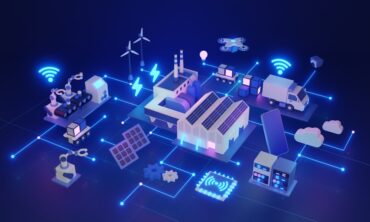
Edge computing and 5G in the enterprise will transformation what we know as data centers. They are likely to evolve to be smaller and more geographically dispersed.
How are edge computing and 5G and enhancing the enterprise? What will it take to scale these technologies to meet industrial-strength enterprise requirements?
These were questions explored in a panel webcast moderated by Dr. Aleks Krotoski, host of BBC’s The Digital Human series. “We are at a boom moment for edge computing,” she says. “And an exciting time for innovation and a huge opportunity for entrepreneurs to establish a foothold in the operations of the future.” Edge and 5G are paving the way for new products and services launched by entrepreneurs and innovators in large corporate settings alike, panelists agreed.
See also: 5G and Edge: The Convergence Accelerates
The impetus in scaling edge and 5G in enterprises is tied to the rise in digital channels over the past year, says Mark Thiele, co-founder and CEO of Edgevana. Once the benefits – “greater interaction with customers, improved ability to manage supply chain without waiting for phone calls or emails about where things are and what the status of a product is, improved safety on a shop floor – are realized, “there’s no going back,” he adds. 5G and edge are playing an enormous part in this irreversible transformation, he adds.
Looking deeper in the future, edge and 5G will help deliver “improved customer experience, and there already has been development in this direction,” says Carlos Bravo, director of cloud strategy execution for the CTO Office at Ericsson. “Just imagine going into a bank office or going into a retail office and to get a completely different experience. We see that, and that will change the way we interact today, the way we interact with each other, and with the rest of the different industries.”

This means a transformation of what we know as data centers, he continues. There are likely to evolve smaller, more geographically dispersed data centers. “Data centers will be everywhere, and they will be all types of data centers,” Thiele says. “We’ll need all available resources to populate the initial stages of edge, especially as it becomes more of a public use opportunity as well as a behind-the-scenes opportunity. Almost any data center that is near a populated area that has network capabilities for reaching and responding to edge-oriented devices is a good data center.”
However, the growth of these smaller data centers will hinge on the types of workloads that evolve with edge computing. “Edge, like any other solution, is a financial decision,” he says. “No one’s going to deploy a bunch of data centers without having anyone already paying for some of the footprint, and no one is going to deeply servers at the edge of every city of the world if they don’t already have customers for those servers. Edge is something we have to build on based on return on investment. It’s no different than any other IT solution that’s ever been built. Edge needs to be is where there’s economic opportunity based on the availability of technology to solve that particular problem with return on investment.”
There is significant ROI to be seen on well-focused use cases, Thiele continues. “That return on investment could be better safety on a shop floor, better protection against equipment failure, better health care or gaming or retail experiences, or even just pure customer engagement improvement.”
Within the edge realm, 5G addresses one of the ironies of modern computing. “You may put a workload right next to a customer, an edge solution, with the compute only five miles away in a local data center,” says Thiele. “Yet, the traffic for that activity between that edge solution, tool or sensor has to travel 1,000 miles to get from the edge to that data center and back again, losing most of the latency benefit.” For true mobile real-time access at the edge, 5G is an enormous opportunity,” says Thiele. “Capabilities such as security at the edge and the ability to slice networks more effectively are really being crucial to the ongoing development of the edge opportunity.”
At the same time, while edge and 5G infrastructure is seen as a way to address latency, the benefits extend well beyond that, Thiele says. “Most of us talk about latency as the first driver of edge computing. What gets missed is the volume of data being created at the edge. That volume of data needs a better ability to be managed locally, and to be transported locally, in near real time, in smart cities, in smart homes, from an ambulance to a doctor’s office or a hospital. And so 5G is critical not only for enabling that capacity in places that used to depend on that kind of scale but also for localizing the network at the edge.”






